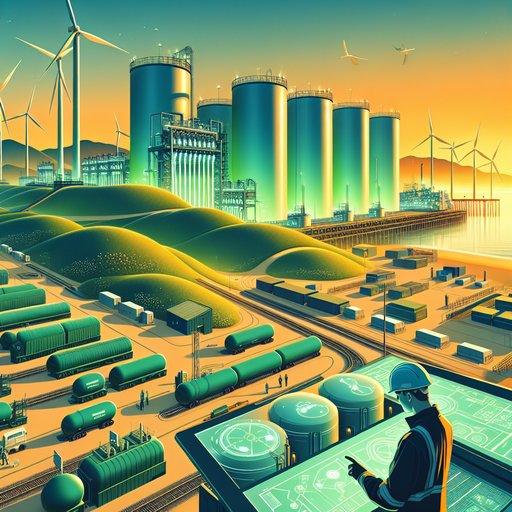
The latest skirmish in the climate narrative war arrives with a headline that demands attention: “Get the Facts Straight, The Independent, Island Nations Are Growing, Not ‘Sinking Into the Sea’.” The claim, amplified by a skeptical outlet, insists that some islands are expanding rather than vanishing beneath the waves [2]. Another piece touts a new study reporting that sea level rise is slower than alarmists allege [1]. Set aside the tribal reflex to cheer or jeer; as an anthropologist of human–environment systems, I care less about scoring points and more about how our stories channel resources. If we fixate on a binary—sinking versus growing—we neglect the more immediate, human-made flood that swamps shorelines and stomachs alike: the torrent of throwaway plastic and the political economy that keeps it flowing. The better question isn’t whether islands are “safe,” but whether our cultures are willing to update the rules of reciprocity in a disposable age.
Anthropology begins with how stories organize survival. Societies don’t just live by facts; they metabolize myths, rituals, and incentives into everyday decisions about what—and whom—to protect. Our species has a talent for dominance that blurs into self-harm when we mistake extraction for prosperity, mistaking the quick win for the long belonging. So the language of “sinking islands” became a civilizational parable: heedless consumption will literally drown the vulnerable.
But parables can harden into caricature, and caricature can misdirect action. This week’s counter-narrative argues the caricature is wrong: some island nations are not disappearing but accumulating land, and mainstream outlets should get the facts straight [1]. The corrective matters; public fear should not be stoked by imagery that outruns evidence. Yet flipping the script from “doomed” to “don’t worry” risks a new oversimplification that serves complacency as surely as sensationalism served panic.
A better civic culture stays with complexity: land can grow in one period and erode in another, and both can be true across different shores. What we choose to fund—and ban—shouldn’t swing with the most clickable headline. A related claim, circulating days later, says a new study finds sea level rising more slowly than some alarmist narratives assert [2]. If that result holds, it should indeed temper the apocalyptic register that sells papers and posts.
But slower is not the same as safe, and trajectories still matter for ports, aquifers, and livelihoods. Moreover, focusing only on centimeters can blind us to the centimeter-by-centimeter policies that determine whether coastlines are livable. Precision is not the enemy of urgency; it is the precondition for useful urgency. Here is where cultural analysis earns its keep.
When we reduce planetary risk to a single metric—how fast water rises—we crowd out the everyday ecologies that will shape our descendants’ options. Rivers used to carry myths; now they ferry the detritus of a throwaway culture toward cradles and reefs. Disposable culture is an oxymoron—cultures that dispose of everything dispose of themselves. The moral is less about tides than about the tide of decisions that make waste cheap, durable, and everyone’s problem.
Look at how convenience is packaged and sold. Where incomes are tight, the market often delivers “sachetized” life: goods in tiny, single-use packets that feel affordable but multiply waste and dependency. This is not a failure of individuals; it is the success of a system that externalizes its costs onto gutters, mangroves, and municipal budgets. The result is a landscape in which the poor pay twice—once in higher unit prices, again in degraded surroundings—while the story told about them is either victimhood or villainy.
The drowning here is not theatrical; it is bureaucratic and petrochemical, a slow asphyxiation by design. Against that current, we need more than mood; we need mechanisms. If the point of correcting sea-level narratives is to align action with evidence [2][1], then let’s also align waste policy with common sense. Imagine a world where every bottle, can, or container carries a small deposit, returned when it comes back into the system; suddenly litter becomes value, and rivers regain their job as connectors, not conveyors of trash.
Such schemes nudge producers to design for durability and reuse, and they pay communities for stewardship rather than extraction. The beauty of this approach is that it does not require waiting for global consensus on climate; it simply rewards reciprocity. Media and policymakers should take a lesson from this week’s headlines. By all means, correct overreach and make sure the public understands the latest findings on islands and sea level [2][1].
But don’t let a duel of narratives lull us into thinking the real work is rhetorical. The real work is infrastructural and institutional: procurement standards that favor refill, city contracts that build return loops, and regulations that shift responsibility upstream to producers. Facts should calm our nerves; they should not sedate our imagination. If we get this right, the tone shifts from doom to design.
Island communities stop being props in a morality play and become co-authors of resilient coastlines and circular economies. Governments and industry can channel the same attention lavished on sea-level debates into policies that make waste scarce and value durable. A global network of deposit-and-return systems could turn cleanup into income and redesign into default. And then, perhaps, our rivers will carry stories worth hearing again—tales of reciprocity, not refuse—while we keep our facts straight and our responsibilities straighter still.
Sources
- Get the Facts Straight, The Independent, Island Nations Are Growing, Not “Sinking Into the Sea” (Wattsupwiththat.com, 2025-09-08T21:00:00Z)
- New study challenges alarmist sea level rise claims, finds slower increase than reported (Naturalnews.com, 2025-09-09T06:00:00Z)






















































